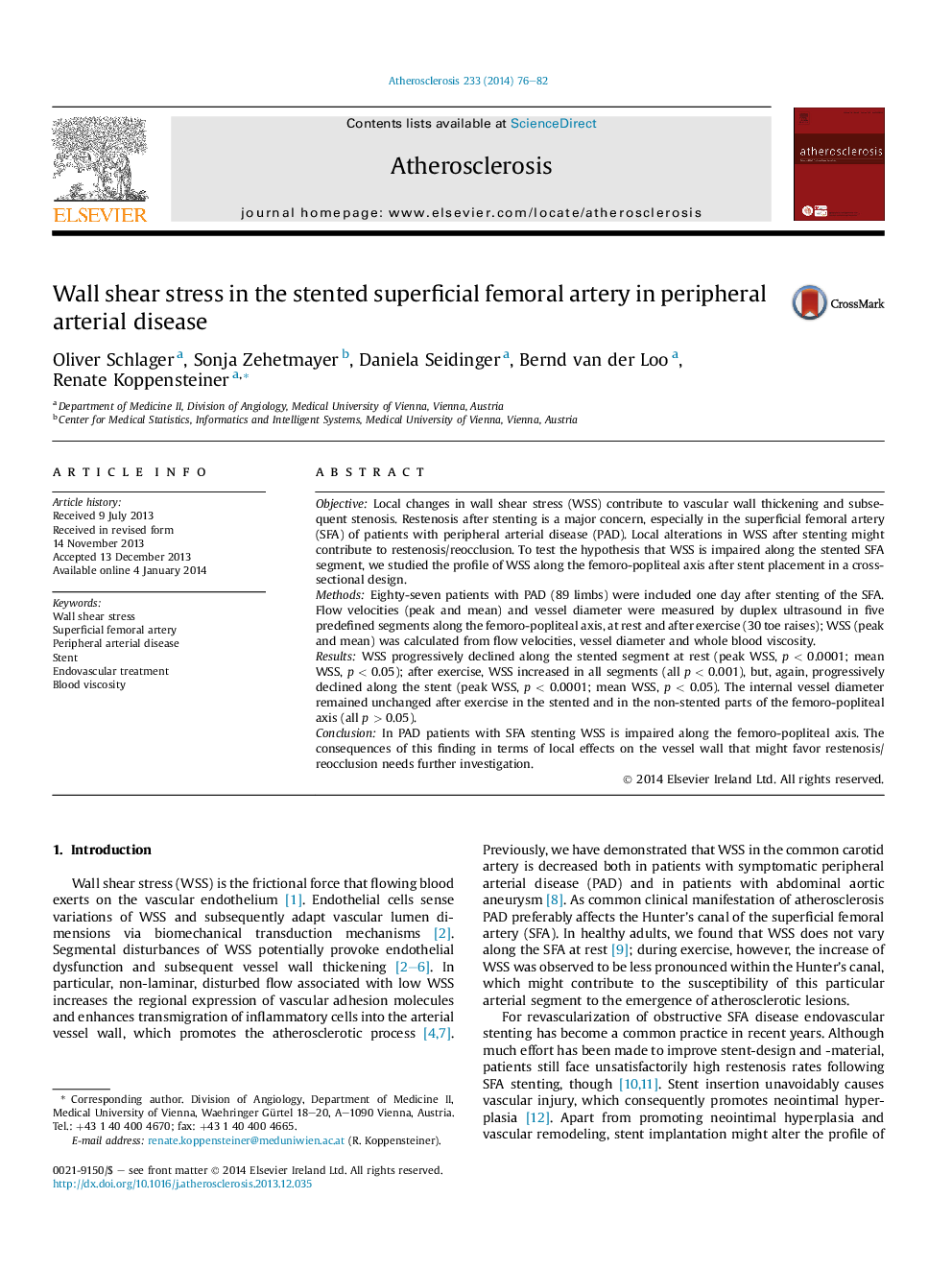| Article ID | Journal | Published Year | Pages | File Type |
|---|---|---|---|---|
| 5946607 | Atherosclerosis | 2014 | 7 Pages |
â¢Wall shear stress (WSS) declines along the stented superficial femoral artery (SFA).â¢Exercise has no impact on the decline of WSS along SFA-stents.â¢The decline of WSS along SFA-stents is inversely related to patients' age.
ObjectiveLocal changes in wall shear stress (WSS) contribute to vascular wall thickening and subsequent stenosis. Restenosis after stenting is a major concern, especially in the superficial femoral artery (SFA) of patients with peripheral arterial disease (PAD). Local alterations in WSS after stenting might contribute to restenosis/reocclusion. To test the hypothesis that WSS is impaired along the stented SFA segment, we studied the profile of WSS along the femoro-popliteal axis after stent placement in a cross-sectional design.MethodsEighty-seven patients with PAD (89 limbs) were included one day after stenting of the SFA. Flow velocities (peak and mean) and vessel diameter were measured by duplex ultrasound in five predefined segments along the femoro-popliteal axis, at rest and after exercise (30 toe raises); WSS (peak and mean) was calculated from flow velocities, vessel diameter and whole blood viscosity.ResultsWSS progressively declined along the stented segment at rest (peak WSS, p < 0.0001; mean WSS, p < 0.05); after exercise, WSS increased in all segments (all p < 0.001), but, again, progressively declined along the stent (peak WSS, p < 0.0001; mean WSS, p < 0.05). The internal vessel diameter remained unchanged after exercise in the stented and in the non-stented parts of the femoro-popliteal axis (all p > 0.05).ConclusionIn PAD patients with SFA stenting WSS is impaired along the femoro-popliteal axis. The consequences of this finding in terms of local effects on the vessel wall that might favor restenosis/reocclusion needs further investigation.
